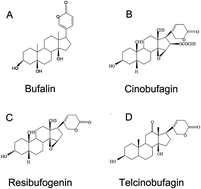Effects of cinobufacini injection on hepatocarcinoma cell proliferation, invasion and metastasis
Abstract
Background & aims: to explore the effects of Cinobufacini Injection (CI) on proliferation and invasion of hepatocarcinoma cells cultured with lymphatic endothelial cells (LECs), and lymphatic metastasis inhibition in immunocompetent mice. Methods: trypan blue exclusion assay was used to examine the proliferation of human hepatocacinoma HepG-2 cells; MTT assay was employed to evaluate the heterogeneous adhesive ability of HepG-2 cells; transwell was used to determine the invasion ability of HepG-2 cells. Protein expression levels of VEGF-C, MMP-2 and MMP-9 in HepG-2 cells were examined by western-blotting. Tumor growth of mouse hepatocarcinoma HCa-F cell burdened mice was evaluated by the size, and lymphatic metastasis was determined by the weight of lymph nodes. Results: the proliferation, invasion and heterogeneous adhesion abilities of HepG-2 cells were significantly greater when they were cultured with LECs than when cultured alone. CI reduced the proliferation, invasion and heterogeneous adhesion of HepG-2 cells with or without cultured LECs. CI also reduced the expression of VEGF-C, MMP-2 and MMP-9 in HepG-2 cells; tumor growth and lymphatic metastasis of HCa-F burdened mice was significantly inhibited by the treatment of CI. Conclusions: LECs promoted the proliferation, invasion and adhesion of HepG-2 cells; CI inhibited the proliferation, invasion and lymphatic metastasis of hepatocarcinoma cells in vitro and in vivo. The reduced expression of VEGF-C, MMP-2 and MMP-9 may be one of the mechanisms by which CI inhibited tumor growth and lymphatic metastasis.


 Please wait while we load your content...
Please wait while we load your content...